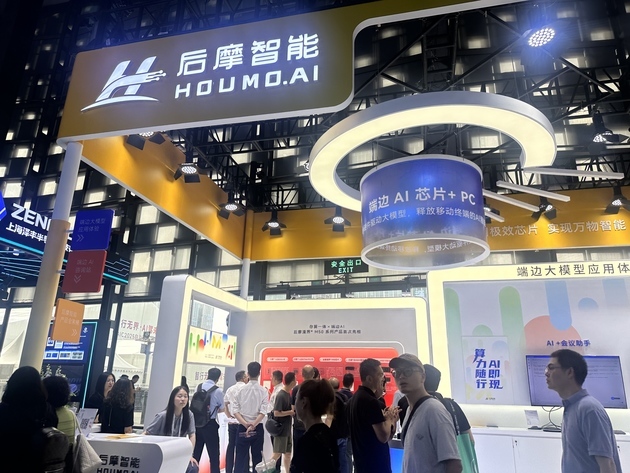At the 2025 World Artificial Intelligence Conference (WAIC) in Shanghai, the spotlight shone on domestic breakthroughs in computing power. Among them was AI chip startup Houmo.AI, showcasing its newly launched M50 chip—designed specifically for on-device and edge inference of large models.
Speaking to National Business Daily (NBD) at WAIC, Houmo.AI CEO Wu Qiang emphasized a pivotal shift in AI computing. "Two trends are becoming clear: model development is moving from training to inference, and from centralized cloud to the edge," he said. Wu believes the future will rely on a hybrid model of terminal, edge, and cloud computing—with as much as 90% of data processed at the terminal or edge.

Founded in 2020, Houmo.AI specializes in in-memory computing and edge AI chips. Wu, who holds a Ph.D. from Princeton and previously worked at AMD, Facebook, and Horizon Robotics as CTO, sees edge AI as the next major frontier. "Our vision is to make AI computing as accessible and ubiquitous as electricity," he told NBD.
The company's M50 chip delivers 160 TOPS INT8 and 100 TFLOPS bFP16 performance, while consuming only 10W of power—comparable to fast-charging a smartphone. Its applications include AI PCs, voice assistants, and mobile robots. Wu noted that affordability is key: "It's not about competing on price, but on value."
Houmo.AI's portfolio now covers both terminal and edge scenarios, including its LQ50 Duo M.2 card, a plug-and-play AI module for portable devices. Wu attributes their technical edge to in-memory computing—a method that embeds computation directly into memory to drastically reduce data transfer and power usage.
Notably, Houmo.AI shifted strategic direction in late 2023. After launching the H30 chip for autonomous driving, Wu realized the segment had become saturated and price-sensitive. "The market was asking for low-cost, efficient solutions. Our chip was too powerful—and too expensive—for the timing," he explained.
Instead, Houmo.AI identified a bigger opportunity in edge large models. "Edge AI can become a more personalized assistant, offering real-time response, privacy, and lower costs," Wu said. This realization led to the release of the M30 chip in early 2024, followed by the enhanced M50 series targeting offline processing in consumer, enterprise, and industrial applications.
Wu also revealed potential partnerships with Lenovo for next-gen AI PCs, iFlytek for smart voice devices, and China Mobile for 5G+AI edge computing.
As embodied AI gains traction, Wu believes robotics—especially companion robots—could mirror the early evolution of autonomous driving. However, he remains cautious: "The ecosystem isn't ready to support chips dedicated only to embodied intelligence yet, but I believe it will be in the future."
Looking ahead, Houmo.AI is developing next-gen DRAM-PIM technology, aiming to embed compute units within DRAM arrays to triple energy efficiency and exceed 1TB/s on-chip bandwidth. This could help deploy 10+ billion parameter models in everyday devices like PCs and tablets—bringing AI computing even closer to everyday life.
Disclaimer: The content and data presented in this article are for informational purposes only and do not constitute investment advice. Please verify all information before making financial decisions. Use at your own risk.


 川公网安备 51019002001991号
川公网安备 51019002001991号





